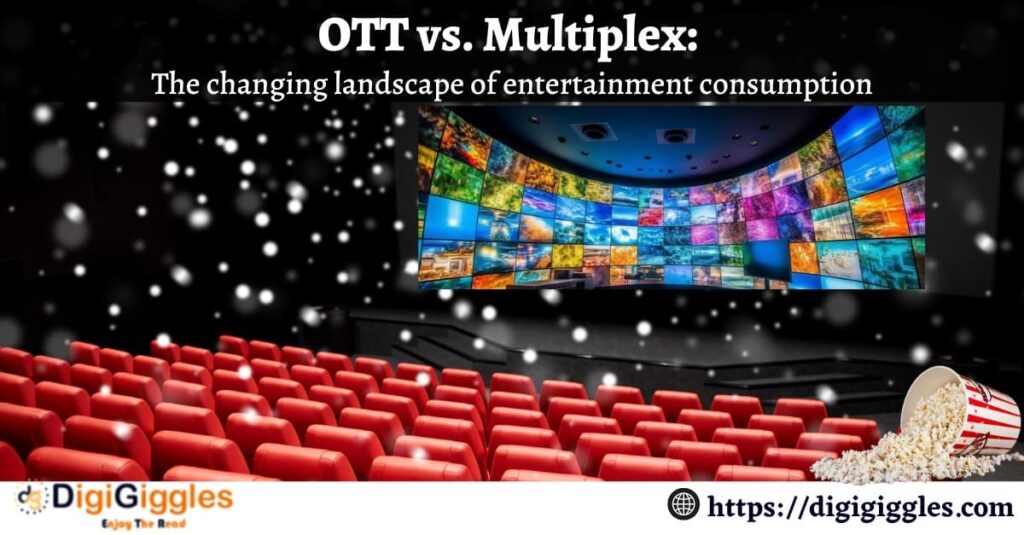Introduction
In recent years the entertainment industry has witnessed a significant shift in how people consume movies and TV shows. The rise of Over-the-Top (OTT) platforms and the emergence of multiplexes have transformed the way audiences experience entertainment. In this blog post, we will delve into the key aspects of OTT and multiplexes comparing their features, advantages, and challenges ultimately exploring the evolving dynamics of entertainment consumption.
Accessibility and Convenience
OTT platforms have revolutionized the way we access content. With just a stable internet connection viewers can stream their favorite movies and shows anytime, anywhere on various devices. Whether it’s a smartphone, tablet, or smart TV, OTT platforms offer unparalleled convenience enabling users to watch content at their own pace.
On the other hand, multiplexes provide a cinematic experience that cannot be replicated at home. The larger-than-life screens, immersive sound systems, and comfortable seating enhance the movie-watching experience. However, multiplexes require physical presence, adherence to show timings, and the hassle of commuting which may pose limitations for some viewers.
Content Variety and Originality
OTT platforms boast an extensive library of content ranging from classic movies to exclusive series and documentaries. They offer a diverse range of genres catering to the preferences of a wide audience. Moreover, OTT platforms have embraced original programming producing high-quality content that often rivals traditional film and television.
Multiplexes on the other hand primarily focus on screening newly released movies. While they provide access to the latest blockbusters their content offerings are limited to what the film industry produces. However, multiplexes excel in providing a communal experience allowing viewers to enjoy films with a shared audience reaction.
Cost and Affordability
OTT platforms are known for their cost-effectiveness. By subscribing to a platform viewers gain access to a vast collection of movies and TV shows at a fraction of the price of a movie ticket. Additionally, the flexibility to choose from various subscription plans and the option to cancel anytime make OTT platforms an attractive option for budget-conscious consumers.
In contrast, multiplex tickets can be relatively expensive, especially for premium formats like IMAX or 3D. Going to the multiplex also incurs additional costs such as transportation and snacks which can significantly impact one’s overall entertainment budget.
Release Patterns and Timelines
OTT platforms have challenged traditional release patterns by introducing the concept of “direct-to-streaming” releases. This approach allows movies and series to reach audiences simultaneously or shortly after their theatrical release providing a choice between the comfort of home viewing and the traditional theater experience.
Multiplexes on the other hand typically enjoy exclusive rights to screen movies during their initial release period. This exclusivity gives them an edge in showcasing new releases attracting movie enthusiasts who prefer the thrill of watching films on the big screen.
Conclusion
The entertainment industry is undergoing a transformative period driven by the rapid growth of OTT platforms and the enduring presence of multiplexes. While OTT platforms offer unparalleled convenience, a wide range of content, and cost-effectiveness, multiplexes continue to provide a unique cinematic experience and remain the preferred choice for many movie enthusiasts. Ultimately the decision between OTT and multiplexes depends on individual preferences, circumstances, and the desire for communal or personalized entertainment consumption.
